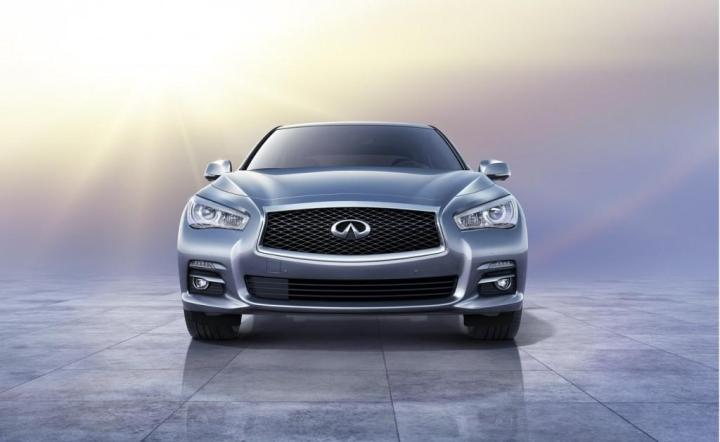
Infiniti caters to the American market. But now the boss of Infiniti, Nissan’s luxury division, says this strategy is holding the brand back.
“Our strong U.S.-centric focus has driven product strategy, and for Infiniti to be positioned as a strong contender in the premium market,” Infiniti president Joahn de Nysschen said in an interview with WardsAuto, “we really do need to break the mold of (that) very strong focus.”
Infiniti’s de-Americanization strategy centers on smaller engines and bigger vehicles.
de Nysschen says Infiniti needs a smaller, more fuel-efficient engine to better compete in Europe and other markets. The 3.7-liter, 328 horsepower VQ V6 is a fine engine, but only as long as buyers can afford the gas.
Competitors like BMW are even bringing their smaller engines to the U.S. Even Cadillac offers a 202-hp four-cylinder engine in the ATS. When your car appears more bloated than a Cadillac, you know you have a problem.
That’s why Infiniti is borrowing a 2.2-liter, 168 hp, direct-injected diesel four-cylinder for European versions of its Q50 luxury sedan.
The second part of Infiniti’s plan for world domination doesn’t involve as much pragmatism.
Infiniti believes it needs to add larger cars to its lineup, which will create a halo effect. Nissan executive vice president Andy Palmer told WardsAuto that Infiniti needs these bigger models to build its reputation as a luxury brand. Recent reports indicate that Infiniti could very well build a luxury version of the Nissan Titan full-size pickup.
This is actually similar to the strategy Nissan used to launch Infiniti. Its first cars were the full-size Q45 sedan and M30 coupe. Over the years, the brand has gradually expanded with smaller models and different types of vehicles like crossovers.
This time around, Infiniti may pin its reputation on a four-door coupe, along the lines of the Audi A7, BMW 6 Series Gran Coupe, and Mercedes-Benz CLS.
Infiniti launched in the U.S. in 1989, and was available only Stateside until 2008 when it went global. Like its fellow Japanese luxury brands, Lexus, and Acura, Infiniti was conceived primarily to appeal to American buyers’ demand for prestigious brand names.
Since then, Nissan has tried to position Infiniti as a competitor to the established German luxury brands but suffered limited success. The G35 and G37 sedans (since replaced by the Q50) were credible rivals to the BMW 3 Series, but Infiniti has never had a full lineup that could compete with other brands model-for-model.
Adding more engine options and more cars seems like a possible way to address that problem, and it’s definitely a bold strategy. Infiniti could completely reinvent itself over the next few years.
Editors' Recommendations
- 2022 Infiniti QX60 aims to make school runs more stylish
- 2020 Karma Revero GTS adds performance to go with its sleek looks
- Honda joins GM, Mercedes, Toyota in self-driving group
- Most people want to keep their cars away from full self-driving, study says
- Infiniti’s latest InTouch system finally adds Apple CarPlay and Android Auto


